This fascinating volcanic island, located off the coast of Africa, has it all; year-round sunshine, traditional villages, kaleidoscopic beaches and a punchy mix of adrenaline-fuelled activities, for those with a taste for adventure. Decades on from welcoming its first package tourists, Lanzarote is having a bit of a moment. Forget staring at volcanoes from your sunbed, today, a visit to this fiery isle means getting up close and personal with the UNESCO biosphere reserve. For some, this means watching the sunrise from the top of a volcano or hearing a concert in a volcanic cave. Others will trek through eerie fields of lava, or try a spot of wine tasting, in one of the island’s many bodegas.
Yes, Lanzarote has finally stolen the crown as the Canary Islands’ capital of cool. And, thanks to the island’s prodigal son, artist and architect César Manrique, strict building regulations have saved the island from high-rise hotels, instead gifting it with verdant valleys, sweet whitewashed villages and some luxurious villas to boot.
Why visit
Lanzarote’s guaranteed sunshine, short flight time and relaxed attitude to children has been attracting families to the sun-drenched island for decades. However, a wave of new cultural attractions and activities and a rise in off-piste luxury villas has revealed new areas of the island, previously hidden away for local eyes only.
A handful of well-established seaside resorts, still cater brilliantly to families seeking fun-filled waterparks, and safe, sandy beaches. But venture in to the less developed north of the island to experience Lanzarote’s raw, rugged beauty, away from the crowds.
Well signed walking trails lace the island’s dramatic lunarscape, making it a haven for hikers of all abilities and an explosion in the water sports on offer, has seen the faithful pedalo joined by luxury catamaran cruises, submarine voyages and even Europe’s first underwater museum.
The rugged terrain and pleasant climate has also caught the attention of both professional and budding athletes, making it a ‘must visit’ destination for sporty types, seeking winter training camps and cycling holidays with a difference.
When to visit
Located less than 80-miles off the north-west coast of Africa, Lanzarote offers year-round sun, with temperatures rarely dipping below 16 degrees. In summer, a constant breeze keeps temperatures manageable for family holidays, while winter is ideal for outdoorsy types, looking to scale volcanoes and cycle up mountains. Just a 4-hour flight from the UK, Lanzarote offers easy and affordable short-haul winter sun.
Practical Information
- Currency – Euro
- Time Zone – Greenwich Meridian Time (GMT)
- Languages Spoken – Spanish is the official language, but fear not, most hospitality staff speak good English.
Getting around
- Airport: The UK is well connected to Arrecife Airport via a number of direct flight routes.
- Public Transport: With no trains and limited public transport, the best way to explore Lanzarote is by hiring a car. There are plenty of hire car companies at the airport, but do arrange in advance. Busses connect Arrecife to the main tourist resorts and many towns and villages around the island. If you are planning on using the bus often, ask about multiple journey tickets – these can cut your journey costs in half.
- Taxis/ Ferries: There are taxis on the island, but due to local restrictions on pick-ups, these are best arranged in advance.
There are also boats and ferries that connect Lanzarote with La Graciosa, Fuerteventura and the other Canary Islands. It is also possible to reach the Spanish mainland.
Good to Know
-
- The emergency services can be reaches by calling 112.
- Take a valid European Health Insurance Card (EHIC) with you.
- More information on accessing the local health system can be found here.
- All main tourist resorts have a dedicated tourist office, but one can also be found in the arrivals lounge at the airport.
Social Etiquette
Lanzaroteños are a friendly bunch, so don’t be surprised if bar staff casually strike up conversation or a shopkeeper greets you like an old amigo. The local language is Spanish, but there is a good level of English spoken in the main resorts. However, it is always appreciated when tourists give the local language a go, so here are a few handy phrases to get you started:
Hola – Hello
Buenos días – Good morning
Buenas tardes – Good afternoon
Buenas noches – Good night
Por favor – Please
Gracias – Thank you
Adiós – Goodbye
Sí – Yes
No – No
Out and about there are some fantastic markets scattered around the island. While it is perfectly acceptable, even expected, for you to haggle at these, do not try and haggle in supermarkets or restaurants.
Taxis typically run on the meter, but we advise asking for a guide price before setting off. After all, here a journey that looks like it is just around the corner on a map, could mean detouring around a mountain or volcano.
Tipping is not expected for all services, but if you are satisfied with a meal in a restaurant, we recommend tipping around 10%. Small change is adequate for drinks in cafes and bars.
1. Timanfaya National Park
This eerie national park was created in 1730, when one of the largest volcanic eruptions known to man engulfed the area. The eruptions, which raged on for six years, swallowed up around a dozen villages. The result is 20 square miles of jagged lava beds, hundreds of volcanic cones and the ‘Mountains of Fire’ themselves. The park’s terrain is so alien that NASA chose it as a training location for their Apollo 17 crew!
For an all ‘bells and whistles’ guided tour, head to the visitor’s centre and jump on the official bus tour (as you cannot access this area of the park without a guide) – expect all manner of volcanic party tricks; from fiery furnaces to shooting geysers. If organised trips aren’t your bag, fear not, there are lots of places where you can access Timanfaya on foot. You’ll know when you’re entering the park, as you will see El Diablo, the mischievous Timanfaya devil symbol. Designed by Manrique, it guards the park’s borders. Head to El Golfo and you can walk through the park, without seeing another soul. Park at the village playground and take a circular trail through 6ft-tall lava beds, past a dramatic black beach and back to the village’s café, via the Atlantic battered clifftops. You’ll need sturdy walking boots, a sense of adventure and good weather.
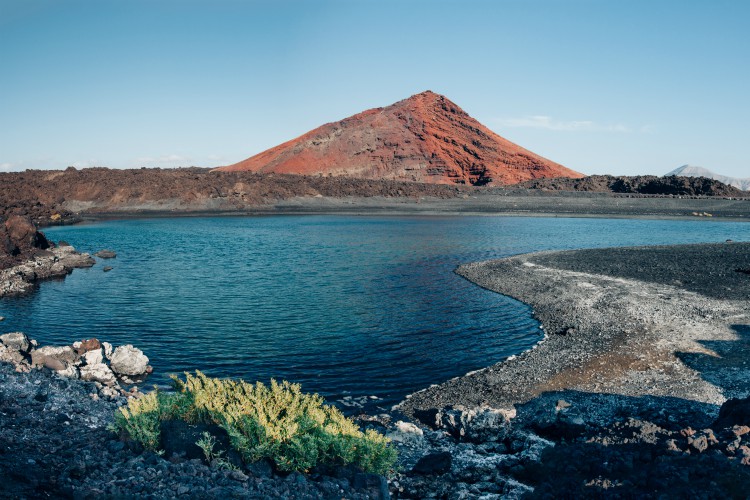 ☝️Top Tip: If you opt for the official tour, arrive after 15:00, when the crowds have eased off, the weather is cooler and you get 20% off the entry price. Grab a window seat on the right-hand side of the bus for the best views.
☝️Top Tip: If you opt for the official tour, arrive after 15:00, when the crowds have eased off, the weather is cooler and you get 20% off the entry price. Grab a window seat on the right-hand side of the bus for the best views.
Good to Know: There is free parking. Allow around two and a half hours for your visit. Food is available. The last organized bus tour departs at 17:00 (18:00 in Summer). Owing to dodgy internet, the box office only accept payment in cash. If you are planning to visit lots of CACT’s attractions, buy a multi-centre ticket – it works out cheaper.
Contact: Lugar Tinguatón, 35560 Tinajo
+34 928 11 80 42
Open: 9:00 – 17:45 (18:45 in summer)
Cost: Adult €10. Children under 12 €5 (under sevens go free) *Arrive after 15:00 to get 20% off your ticket price.
2. César Manrique Foundation
Fancy getting inside Lanzarote’s most famous lava bubbles? Volcano House was once the swoon-worthy home of César Manrique. Built in and around five giant lava bubbles, today his spectacular home is a foundation, dedicated to the man himself. Underground tunnels link the bubbles, taking in the ballroom, gardens and Manrique’s studio, where you can admire priceless artworks by the likes of Picasso, Saura and, of course, Manrique. Don’t forget to take a photo by one of Lanzarote’s most Instagramable pools.
☝️Top Tip: Keep your eyes open as you approach the roundabout next to the foundation – it’s home to Fobos, the largest of Manrique’s famous ‘wind toys’, which are scattered around the island.
Good to Know: If you also plan on visiting Manrique’s Haría home, Palm Grove House, it is cheaper to buy a €15 twin-attraction ticket through the foundation.
Contact: Taro de Tahíche – C/ Jorge Luis Borges, 16 35507 Tahíche +34 928 84 31 38
Open: Mon – Sun 10:00 – 18:00. *Last admission is at 17:30. It is open every day, except New Year’s Day.
Cost: Standard price €8. Children under twelve €1
3. Jameos del Agua
Manrique has scattered the island with various amazing properties, but Jameos del Agua is so spectacularly bizarre, it has all the makings of a Bond villain’s weekend lair. Built within a subterranean cave network, it now boasts a restaurant, bars, the world’s only cavernous concert hall and yet another breath-taking pool, watched over by a century-old palm tree. Don’t miss the crystal-clear lake – it is home to the rare blind albino cave crab.
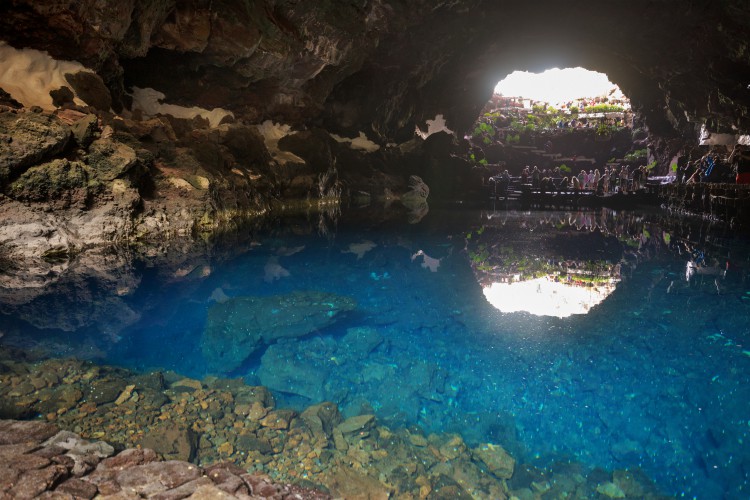 ☝️ Top Tip: Wear sturdy shoes, and don’t forget to pack a hat, sunscreen and your sunnies; the pool area is a serious sun trap.
☝️ Top Tip: Wear sturdy shoes, and don’t forget to pack a hat, sunscreen and your sunnies; the pool area is a serious sun trap.
Take a baby carrier as there is no pushchair access.
Good to Know: Jameos Nights take place on Tuesdays and Saturdays, (and Wednesdays during summer), offering cavernous dining with live music (from 19:00). Book tickets in advance and do check the website for other events; from screenings to concerts.
Contact: Carretera Arrieta-Órzola, S/N, 35542
+34 901 20 03 00
Open: Mon, Wed, Thurs, Fri, Sun – 10:00 to 18:30. Tues, Sat (& Weds in Summer) – 10:00 – 01:00.
Cost: Adult €9.50. Child under twelve €4.75 (under sevens go free).*Bargain hunters should arrive 15:00 – 19:00, when you get 20% off your entrance fee.
4. Haría
Referred to as ‘The Valley of a Thousand Palms’, this pretty village up north, provides a welcome respite from Lanzarote’s stark, arid landscape. In the 17th century, locals began planting palm trees to celebrate births – the result, is this verdant palm scattered valley. For a bit of retail therapy, head to the main plaza, Mercado Artesanal, for the Saturday morning craft market. This lively affair sells everything from jewellery, art and woodwork to pottery and leather goods.
☝️Top Tip: Manrique enthusiasts can pop into his former Haría home, Palm Grove House.
Good to Know: This craft market is relatively small, with around thirty stalls, if you want a more intense, mainstream market experience, consider heading to busy Teguise on Sunday.
Open: Sat – 9:00 – 14:00.
Cost: Free
5. Mirador del Río
Perched 474m high, towards the northern tip of Lanzarote, this vertigo-inspiring lookout began life as a watchpoint for pirate ships, before becoming a gun battery. Today, thanks to César Manrique’s Midas touch, it’s one of the island’s most popular tourist stops, providing uninterrupted views across to the island of Graciosa, and the Chinijo Islands National Park. Inside, it showcases Manrique’s signature curved white walls, but it is the view which is the star of the show in this pad. It is also the perfect spot for a Titanic-style embrace.
☝️Top Tip: During winter and spring, the heady heights of Mirador del Rio can make it a chilly affair, so pack a jumper.
Good to know: There is also a café / bar and a small shop selling local handicrafts and books.
Contact: Carretera de Ye, S/N, 35500, Haria
+34 928 80 15 80
Open: 10:00 – 17:45 (18:45 in Summer)
Cost: Adult €4.75. Children up to twelve €2.40 (under sevens go free).
6. La Graciosa
Well, how often do you get to hang out on a deserted island? Jump on a ferry from Órzola and you will be exploring La Graciosa’s castaway beaches in under half an hour! The tiny island has a certain Robinson Crusoe charm about it, (minus the drama). With no roads, just superb unspoilt beaches at every turn, it’s ideal for cycling, hiking or just lounging around. There are some sweet restaurants serving catch of the day, with endless sea views to boot.
☝️Top Tip: Ferries and boats arrive in the main port of Caleta del Sebo. Many guide books suggest hiring a bike here and hitting the car-free roads – just be aware, that with most of the tracks made of soft sand, it can be pretty hard going to get anywhere on two wheels. If you want to seek out the island’s best beaches, jump in one of the waiting 4×4 taxis or arrange a water taxi.
Good to Know: There are lots of beaches to choose from on the island, but just a ‘heads up’… La Graciosa beach is a popular nudist spot.
Contact: Lineas Romero offer return ferries from the port of Órzola, to Caleta de Sebo on La Graciosa.
+34 928 596 107
Cost: Lineas Romero charges €20 for an adult’s return ticket (children up to 11 cost €11, and under twos go free).
7. La Geria
Believe it or not, Lanzarote’s stark landscape is home to thousands of acres of vineyards, largely concentrated in the central La Geria region. In fact, having become a favoured tipple of European royals during the 16-th century, wine production was once the island’s main source of income. However, it only takes a glance to realise that these are no normal vineyards, with each vine buried beneath a layer of volcanic ash and surrounded by a curved wall of volcanic stone, the effect from a distance is almost reptilian. You can stop at a bodega or two en route for a taste.
☝️ Top Tip: Dating back to 1775, Bodegas El Grifo is the island’s oldest wine producer. Join a tour of the vines, or head straight to the popular wine bar.
Good to know: With countless family-friendly activities scattered across the island’s mountains, volcanoes and beaches there are lots of fun and exciting ways to introduce the island’s quirky landscape and wildlife to your little ones. Here are some of our favourite activities to kick start your family’s Lanzarote adventure…
1. Family-friendly beaches with a difference…
If you are holidaying with toddlers, the chances are, you will want a safe beach, to keep them entertained. Unsurprisingly, the main resorts of Costa Teguise, Puerto del Carmen and Playa Blanca all have popular beaches which tick the family boxes. However, just because you have a little one in tow, doesn’t mean you can’t explore the island’s more unusual coastal haunts. Think outside the box and make the most of the island’s shallow rock pools. Caletón Blanco, Punta Mujeres and Charcones de Janubio all have naturally occurring pools, which makes a nice change of scene for toddlers, offering a paddling pool with a difference.
☝️ Top Tip: Don’t forget jelly shoes, the pools are rocky!
Good to know: Famous Papagayo is a great choice on paper but it can be tricky to reach if you’ve got toddlers in tow.
2. Submarine Safaris
Head to glitzy Puerto Calero marina and jump aboard the $3.5m yellow submarine. The manageable 1-hour trip is ideal for toddlers, with real shipwrecks and plenty of sea life to discover. Sometimes, accompanying divers feed the fish and point out interesting finds. The minimum age is two years old. If you feel more comfortable above the water, you will find plenty of glass-bottomed boat tours around the resorts.
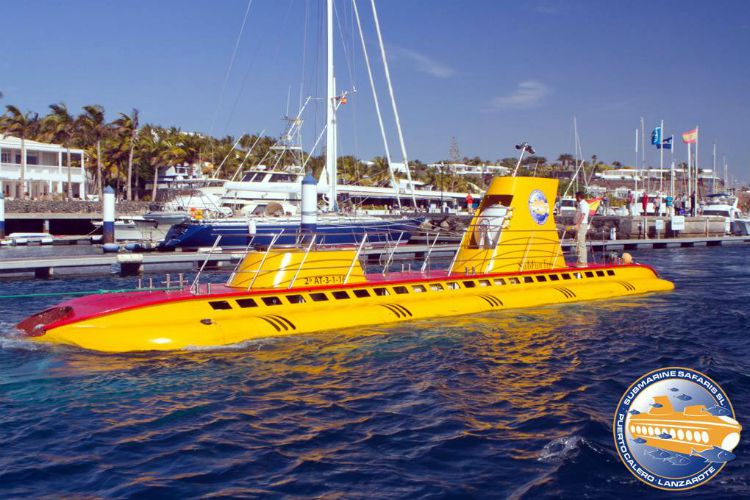 ☝️ Top Tip: The Submarine Safari offers free bus transfers from Costa Teguise, Puerto Del Carmen and Playa Blanca.
☝️ Top Tip: The Submarine Safari offers free bus transfers from Costa Teguise, Puerto Del Carmen and Playa Blanca.
To get younger kids even more excited about the dive, check out the Kid’s Club section on the Submarine Safari’s website, where they can learn about the submarines, make one at home, do a quiz and enter a colouring competition.
Good to Know: Tickets must be booked at least 24-hours in advance. Book online at least 72-hours in advance and you will receive 10% discount. There is no food or drink sold onboard, but Puerto Calero Marina has plenty of cafes and restaurants.
Contact: Puerto Calero Marina, Yaiza
Open: They normally run around 5 dives a day, but check the website for details.
Cost: Adult €55/Child €34.
3. Camel Rides
Kids go crazy for camel rides and where better to venture through than the eerie Timanfaya National Park. This fun activity is a great way of getting children interested in the island’s history and unique landscape – plus, it makes a great holiday photo!
Good to Know: During peak summer months, these rides do get busy, so slather on the sun cream and expect to queue. The ride itself lasts about twenty minutes, so do the maths upon arrival. Alternatively, you will see much quieter rides lined up along the roadside, as you drive around the island.
Contact: Echadero de los Camellos, Timanfaya National Park, Lugar Tinguatón, 35560 Tinajo
Cost: Around €12
4. The Catlanza Catamaran
Think luxury sailing trips are just for the footloose and fancy free? Think again. Docked in glamorous Puerto Calero Marina, is ‘Catlanza’, an enormous family-friendly catamaran. The all-inclusive sailing trip is so smooth, that they even welcome pushchairs onboard. Their family sailing days are packed with fun and games. Children can help sail the boat, raise the sails and even have a go on the jet ski, (with a crew member at the helm). Got teenagers, too? Come on, nothing blows away a dose of teenage angst better than razzing around a pristine bay on a jet ski and staring aimlessly at an azure horizon.
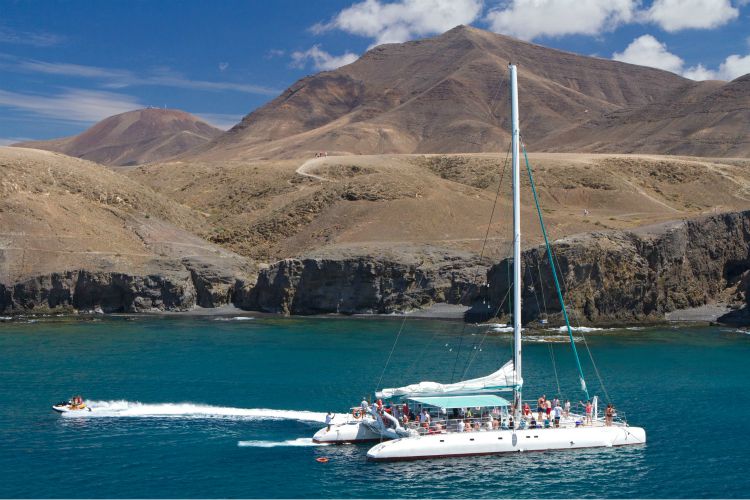
Good to Know: Do not expect to spend time on the actual beaches, these trips are all about fun out at sea, mooring up just off the coast for water sports and the all-inclusive lunch.
Contact: Catlanza SL, Puerto Calero/Corralejo, Yaiza
+34 928 51 30 22
Cost: Adults from €59. Children from €39.
5. Off-Road Quad Bike Expedition
The three-hour tour covers 95km, half of which is off-road dirt tracks, taking in El Golfo’s famous emerald green lake, the salt flats of Salinas de Janubio, the pretty town of Yaiza and the wine region of La Geria en route.
☝️ Top Tip: Take sunnies and a scarf to protect your face from the dust.
Good to Know: The driver must be above eighteen years old and have held a driving licence for a minimum of two years. Each quad can also seat one passenger (the minimum age is five years old).
Contact: Rent-a-Quad, Avenida Archipiélago, 7, Playa Blanca, Yaiza
+ 34 645 09 03 09
Price: A one-hour quad bike experience is €55pp, two hours is €85pp and the full three-hour tour is €110pp.
6. An Off-Road Segway Expedition
Okay, this may not be as adrenaline inducing as the quad bike experience, but the minimum age for riding a Segway is just fourteen years old, so they can steer themselves through the island’s lunarscape. There are various tours available, many of which take in the white sands of secluded Playa de los Pozos and the famous golden bay of Papagayo. More advanced drivers get the opportunity to make their way up Montana Roja, the rusty red volcano which overlooks the resort of Playa Blanca.
☝️ Top Tip: Slather on that sunscreen, wear enclosed shoes and pack a sun hat – cruising along the infamously breezy coastline it’s easy to underestimate the sun.
Good to Know: Despite having a minimum age of fourteen, some outings allow younger riders to jump onboard the guide’s Segway – ask for details.
Contact: Shopping Center, El Pueblo-Las Coloradas, Calle Las Buganvillas 6, 35580 Playa Blanca, Yaiza.
+34 657 55 71 90
Tour times: Mon – Sat 9:30 and 16:30
Price: €35 – €55pp
7. A Family Jeep Adventure
There are lots of companies offering this high-octane outing around the island, with most trips lasting between four and seven hours. For spontaneous types, Adventure Holidays Lanzarote decide their route on the day, according to the weather and how adventurous you fancy being. This is a fun way of exploring hidden parts of the island… without losing your hire car deposit!
☝️ Top Tip: This is not an activity for those with travel sickness.
Good to Know: All routes include transport to and from your accommodation, water and snacks and an experienced guide. If you are looking at a group visit, do request a discount.
Contact: +34 649 389 888
Cost: €49
1. Climb Your First Volcano
An out of this world walk doesn’t need to be a strenuous all-day expedition. In fact, Montaña Roja, the fiery red volcano which overlooks Playa Blanca, (and has been linked to UFO sightings), is an easy stroll from the resort centre. The clearly marked footpath starts with a short, steep ascent. Once at the top, you can walk all the way around the crater. Facing the sea, to your left is busy Playa Blanca, and to your right, the desolate land eventually gives way to the Timanfaya National Park. If the walk gives you a taste for hiking, drive to the resort’s lighthouse, and then trek along the coastline to the eerie, deserted hotel – you will get some super snaps of the unforgiving Atlantic en route.
☝️ Top Tip: Sturdy footwear is a must, given the island’s rough terrain. There is also no shade up there, so wear plenty of sun cream and do be aware that it gets windy at the top and there isn’t much to cling on to in some places. If it is one of your first hikes on the island, save it for a day with calm weather.
Good to Know: The best place to park is Montaña Baja in Playa Blanca.
2. Hit the Surf
Stuff calm shores and sheltered bays, Lanzarote isn’t called the European Hawaii for nothing. Blessed with an epic coastline and that famous wind, it’s a surfer’s paradise, and we have top picks for every ability. Located on the northwest coast, El Quemao is one of the island’s most intense surfing spots. Renowned for its powerful left wave, it delivers endless barrels and suits advanced surfers. Twenty minutes’ drive further north, is Playa de Famara. This busy beach, backed by the Riscos de Famara, is better suited to beginners. One of the island’s most popular surf spots, it boasts vast golden sands and its own surf school. Here you will find surfing, windsurfing and kitesurfing on offer. It’s also a popular site for spotting professionals training.
On the other side of the island, the southern end of La Garita’s gently sloping shores often boast decent surf, especially during winter.
☝️ Top Tip: Lanzarote is a year-round surf destination, but winter is the best time for serious surfing, with the biggest swells hitting the island from September. Start at La Famara, it is relatively safe and has a big surfing community that can give you tips regarding the best surf spots at the time.
3. Explore Europe’s First Underwater Museum
Fancy visiting a museum with a difference? Keen scuba divers can don their snorkels and swim around Europe’s first underwater museum. The mysterious Museo Atlántico was created by British sculptor Jason deCaires Taylor. It consists of 300 thought-provoking sculptures which hide 12-metres below sea-level, in the Bahía de Las Coloradas. Made from PH-neutral concrete, the works of art have essentially created a manmade reef, which acts as a breeding ground, to help the marine life flourish in the UNESCO designated World Biosphere Reserve. Not an experienced diver? Fear not, you can qualify in as little as a morning and book a visit during the beginners’ session.
☝️ Top Tip: Spoiler alert! This place is eerie, but captivating. Take your camera. The statues depict societal issues and injustices. One of the most controversial statues is of refugees on a life raft. Another shows a local fisherman on a funeral pyre.
Good to Know: You need to hold a diving licence for up to 16 metres. Those without a licence can take a morning diving course to get their necessary accreditation, and then arrange a visit between 15:00 and 16:00 – this slot is reserved for beginners. Dives are always guided. The last dive is at 16:30. There is a safety ship.
Contact: Dives are booked via approved diving centres.
Open: Diving hours: Mon to Sat from 09:30 – 17:30.
Cost: Adults €12. Adults free diving €8. *Rates do not include scuba kit hire.
1. Visit the Island’s Oldest Bodega
Head to the Canary Islands’ oldest bodega, El Grifo – you can take in the picturesque wine-growing region of La Geria along the way. Dating back to 1775, El Grifo offers vineyard tours and tastings. For those wanting to get straight to the good stuff, there is a wine bar where you can enjoy their award-winning wines. Serious wine buffs should buy a ticket for The Wine museum. Located on the grounds of the old winery, it displays an array of old tools and machinery used in the winemaking process dating from the beginning of the twentieth century. You can also take a walk around their gardens. Most of the wine produced on Lanzarote is made from the Malvasia grape, which tends to produce fruity, dry white wines – and a superb local sweet wine, too.
Good to Know: Guided tours need to be arranged in advance. Oh, and the local wine is pretty strong stuff, with some reaching 17%.
Contact: Lugar de El Grifo, 35550, San Bartolome
+34 928 52 49 51
Cost: Self-guided tours start from €5. Guided tours start from €9.
2. Dine Like a Local
Despite its seemingly barren terrain, Lanzarote is peppered with fantastic local restaurants to suit every taste and budget – you just need to know where to go! If fish of the day at a local seafront restaurant, away from the tourists, is your idea of heaven, head to laidback Playa Quemada or El Golfo. Not sure which restaurant to choose? Easy, toss a coin, they are all good. Or, for a fancy dinner, don the glad rags and head to Amura in Puerto Calero – it offers great value for money and the setting is dreamy. With a prime position its vast candle-lit terrace is the perfect place to enjoy a taste of the good life. Arrive early and watch the sunset. Popular with the marina’s international yachtie gang, it serves refined seafood. They also do a smashing paella. For those staying around Playa Blanca, Isla de Lobos is the swankiest table in town.
1. Concert and Dinner at Jameos del Agua
Fancy a dinner to remember? Sitting within a spectacular subterranean cave network, Manrique’s masterpiece now boasts a restaurant, bars, the world’s only cavernous concert hall and a swoon-worthy pool. Two or three nights a week, this one of a kind venue stays open late, for its ‘Jameos Nights’ event, which sees guests enjoy a cavernous dinner, followed by live music next to its famous lake. It finishes up with a DJ session.
☝️ Top Tip: Sound like a local; jameo is pronounced ‘ha-may-oh’. As tempting as it is to go all out glam to venue like this, leave the stilettos at home – it can be unlevel underfoot and you want to watch the crabs, not walk like them. Take a jumper on winter evenings, caves get chilly!
Good to Know: The live music varies, depending upon the night, so do check listings online before booking. Guests are welcomed at 7pm, dinner commences at 7.30pm and music kicks off at 10.30pm.
Contact: Carretera Arrecife, Órzola, Haría, 35520
+34 901 20 03 00
Cost: €39.90. €49.50 for the premium menu.
2. Exhibition at Castillo de San José
Originally built to defend the island from pirate attacks, today you are more likely to find Picasso than pirates in this striking sea-facing fortress. Built in the 1770s, following an order from King Charles III, the clifftop castle was abandoned for almost a century. In 1974, César Manrique converted it into a modern art gallery and restaurant.

☝️ Top Tip: Make a night of it – attend one of their ‘Museum Nights’, which take place on Friday and Saturday evenings.
Good to Know: There is also a restaurant, café and gift shop selling jewellery and crafts. There is a late-night bar on Friday and Saturday night. Allow around one hour for your tour of the gallery and don’t forget to check out the sculptures outside.
Contact: Castillo de San Jose, Puerto Naos, Arrecife
+34 928 81 23 21
Open: Daily 10:00 – 20:00
Cost: Adults €4. Children (7-12) €2. Children under 7 are free.
Read any guide to Lanzarote and talk of its history is likely to be dominated by its fiery past, namely its catastrophic volcanic eruptions, the largest of which raged for six years. Ironically, it’s this devastating event, which created the island’s most popular tourist attraction; the Timanfaya National Park.But delve deeper into the island’s past, which is laced with mystery and myth, and you will realise just how many other blows this phenomenal island has been dealt; from plundering north African pirates, to European invasions.It wasn’t until the late 1960s that tourism began to really kick off in Lanzarote, in the seaside resort of Puerto del Carmen. This was also the time, that local artist César Manrique returned from his stint in New York, determined to make Lanzarote one of the most beautiful places in the world.
1. Papas Arrugadas
Also known as ‘wrinkled potatoes’, these deliciously salty snacks are a staple in the Canary Islands and were originally cooked in sea water. Grown in volcanic soils and cooked with their skins still on, they have a nuttiness to them. They tend to be served with two mojos (sauces) – many restaurants pride themselves on having the best mojo, so be warned, they are very secretive about their recipe. The red one, mojo picón, is made with chilli and has a nice spicy kick. The green one, made with parsley, is called mojo verde. Occasionally, you will be given a third, a coriander version, called mojo de cilantro.
2. Lapas
Every nation has a marmite dish; in France, its snails… in Lanzarote, its limpets! Expect a large plate of black or white limpets (or both), grilled and served with the island’s mojo verde.
3. Cabrito Conejero
Due to the terrain, baby goat is one of the most popular meats. Try it in this flavourful local stew, which features garlic, tomato and white wine. Sometimes they serve it at El Diablo, Timanfaya National Park’s restaurant, famous for cooking dishes over volcanic heat.
4. Parrot Fish
Being an island, and a UNESCO World Biosphere Reserve, Lanzarote has some fantastic fresh fish. The most common fish served in restaurants are; cherne (often passed off as sea bass, it’s actually stone bass), dorada (sea bream) and vieja (parrot fish). For something different, try parrot fish. The colourful catch is meaty with a nice flakiness to it.
5. Frangollo
For deliciously sweet Canarian comfort food, order Frangollo. This spiced pudding ticks all of the boxes; milk, sugar, butter, raisins, almonds and cinnamon.
6. Torrijas
There are lots of versions of this traditional bread pudding found across the Canaries and Spain. In general, slices of bread are soaked in milk, sugar and egg, before being lightly fried. Despite being associated with Easter, you will often see them on menus around the island year-round. Normally, they are served with cinnamon, honey or sugar.
7. Bienmesabe
Have a really sweet tooth? Then order bienmesabe. As ever, recipes vary, but expect a thick, sweet syrup marrying ground almonds, cinnamon, sugar and eggs – occasionally, rum or sweet local wine make an appearance.
8. Leche Leche coffee
You won’t find this mysterious coffee in many of the guide books, but ask for a leche leche and you will be rewarded with a stupendously sweet and creamy coffee, consisting of three layers. First, there is a sticky dollop of sweet condensed milk, this is crowned with a shot of strong coffee, and finally, it’s topped up with warm, creamy milk. It is usually served in a small glass. Beware, they are dangerously addictive. The standalone café at the end of Puerto Calero Marina serves a mean leche leche, as do the cafes in El Golfo.
From religious ‘carnavals’ and colourful fiestas to weird and wonderful sporting events, Lanzarote always seems to have some sort of celebration or gathering happening to lure you to its historic villages and lively towns. Here are a few of the island’s most colourful and culturally important events…
1. Cabalgata de los Reyes Magos, January 5th
Translating as The Parade of the Three Wise Men, Cabalgata de los Reyes Magos is the Spanish equivalent of Christmas Eve. Towns and resorts around the island see elaborately dressed kings parade through the streets – often riding camels. With lots of activities for children throughout the day, not to mention endless free sweets, it’s hugely popular with families. Want to be part of the action? The former capital of Teguise is a good place to get involved.
Look out for stalls selling roscón de reyes cakes. Traditionally eaten on the 6th of January, the enormous ring-shaped cakes are topped with colourful candied fruits and filled with cream or chocolate mousse. Hidden within the creamy filling you will find a tiny king figure, and a bean – if your slice contains the king, you wear the crown at the cake’s centre… if you get the bean, you pay for the cake!
Carnaval Season, March
2019 sees Lanzarote’s carnaval (as they spell it locally) season kick-off on March 4th. Starting in the capital city of Arrecife, the carnaval spirit gradually spreads to the main towns and resorts, one by one – even reaching La Graciosa. Each carnaval has its own theme – last year saw Puerto del Carmen’s streets awash with witches, rock and roll stars flood Playa Blanca and medieval knights invade La Graciosa’s shores.
Lanzarote Wine Run, Mid-June
It’s not just a good pair of lungs and sturdy knees that you need to win this bizarre race… you need a strong liver, too! This boozy running race sees participants dash their way through the wine producing region of La Geria, stopping at various bodegas en route, to sample their tipple. What could possibly go wrong? Fancy the wine without the workout? Sign up for the leisurely trek instead.
San Juan Festival, 23-24th June
Taking place on the shortest night of the year, this fiery fiesta marks midsummer. It sees bonfires lit, mainly on beaches, all around the island. For those after a traditional San Juan celebration, Haría is a good place to mark the occasion. After a party? Head to the big seaside resorts and take a lantern to release into the sky.
Nuestra Señora del Carmen, Mid July
Kicking-off on the 16th July, Nuestra Señora del Carmen pays homage to the patron saint of fishermen. Maritime celebrations gradually work their way around the island’s coastal towns, with some of the most popular including Teguise, Playa Blanca and Puerto del Carmen. Expect to see colourful boat processions and plenty of lively street parties.
Fiesta of San Gines, 15-25th August
This lively summertime fiesta sees the island celebrate the patron saint, San Ginés. Celebrations take place across Lanzarote, but it is Arrecife which puts on the biggest show. Expect live music, partying in the streets and even a spot of Canarian wrestling. Hang around the Iglesia de San Ginés area to be at the heart of the action, and in the lead up to midnight, head to the beach for live music and fireworks. www.turismolanzarote.com
Fiesta de Nuestra Señora de Los Dolores, Mid-September
This traditional pilgrimage begins at noon, with food and drinks in Tinajo. Once refuelled, the procession sees countless carts, pulled by camels and donkeys, make their way up to the parish church of Mancha Blanca. This is the point at which the river of lava, created by the volcanic eruptions of 1824, miraculously halted. After giving thanks for salvation during this catastrophe at the church, the celebration continues with a folk festival.
Haría Extreme race, Mid-November
With five different levels to choose from, this exhausting event sees all ages and abilities take on the island’s spectacular mountains, valleys and lava fields, in a series of epic races. There are slow hikes for those keen to natter with friends and even a non-competitive kid’s walk. Mean business? Then get in the zone and take on the ‘Ultra race’, which covers almost the entire length of the island, from Timanfaya National Park to Risco de Famara. A little heads up… the last bit is a killer!
1. Villa Soleado
Villa Soleado has everything families dream of when planning a holiday in the Spanish sun (and then some). Located in the picturesque Playa Blanca resort, guests have nearby access to fantastic facilities. These include kid-friendly sandy beaches, a spectacular waterpark and the resort’s famous waterfront promenade where you’ll find bars, restaurants, cafés and excellent people watching.
This location is ideal not only for a day at the resort but Villa Soleado is also just a five-minute drive from the ferry going to neighbouring canary island Fuerteventura. The property itself is spacious and designed with children in mind, all to be found within well-kept private grounds that feature a gated swimming pool, hot tub and al-fresco dining area.
Sleeps: 4-12 guests
Price from: £58pppn
2. Casa Picon
Casa Picon is another family favourite at the Playa Blanca resort. Located a decent distance from the hustle and bustle, the villa provides a peaceful atmosphere while retaining great access to resort facilities just a five-minute drive away. It’s close to an incredible network of cycling lanes that make for a fun family activity, and we would also recommend a day-trip to Rancho Texas in nearby Puerto del Carmen which is a true Lanzarote classic. This is where you’ll most likely find texas Themed Gifts.
Families travelling with little ones will adore Casa Picon as much for its surroundings as for the amenities right on site. Its interiors are bright and welcoming; all spread out over a single floorplan. There is plenty of peace and quiet (and a private swimming pool of course) as well as lots of shady corners to escape the midday sun.
Sleeps: 4-8 guests
Price from: £44pppn
3. Villa Amethyst
Villa Amethyst is an absolutely perfect base for large groups of friends who want to enjoy and explore the wonders of Lanzarote. Its ideal location is close to shops, bars and restaurants, as well as just a short walk from the beach. The villa is also complete with a rooftop terrace where you can soak up the Spanish sun with views of the Canarian landscapes before taking a plunge in the private pool.
The open-plan style of this villa allows for plenty of light to come in through its full-length windows. Its spaces are separated into a five-bedroom villa and a 2-bedroom apartment, each with its own fully equipped kitchen and a shared seating area where everyone can gather to watch movies and play games together.
Sleeps: 10-15 guests
Price from: £58pppn
4. Villa Restinga
Villa Restinga is situated in the lovely Puerto Calero resort, no more than 5km from Lanzarote’s main hub, Puerto del Carmen. Its location is quiet and relaxed but with great access to local life. In the area you’ll be able to enjoy great restaurants, bars and shops as well as fun activities ranging from theme parks and golf to deep-sea fishing.
The villa itself is located just by the marina, offering fantastic views from the sun terraces and from all bedrooms of the harbour and sea on one side and of the mountains on the other. In the lounge area you can stay entertained with a 50” satellite TV, Bluetooth sound system and pool table, while the outside of the property offers a private pool and barbecue on the terrace.
Sleeps: 6-8 guests
Price from: £58pppn


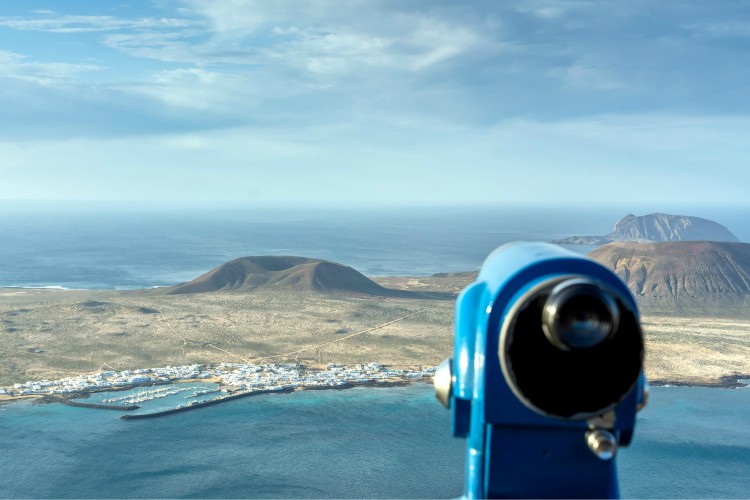
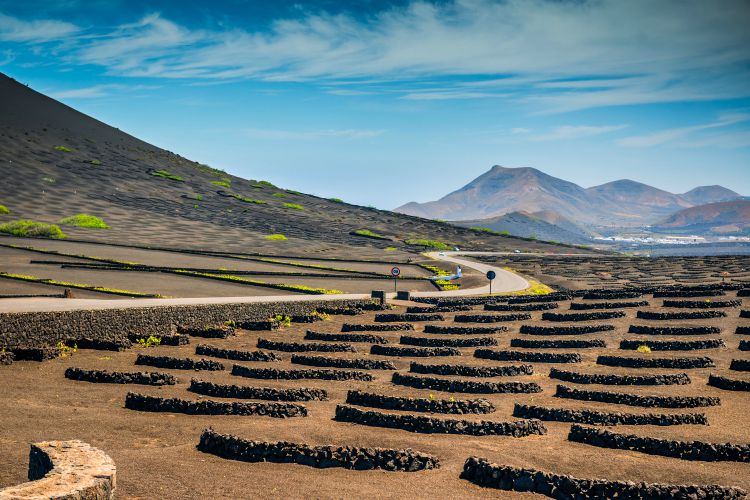
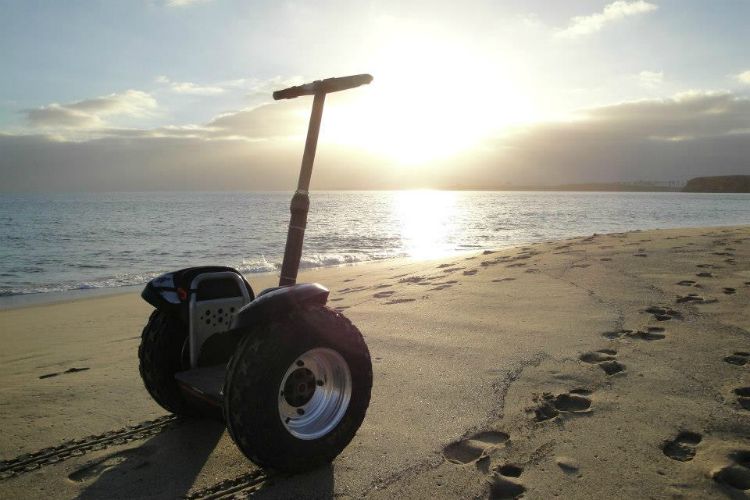
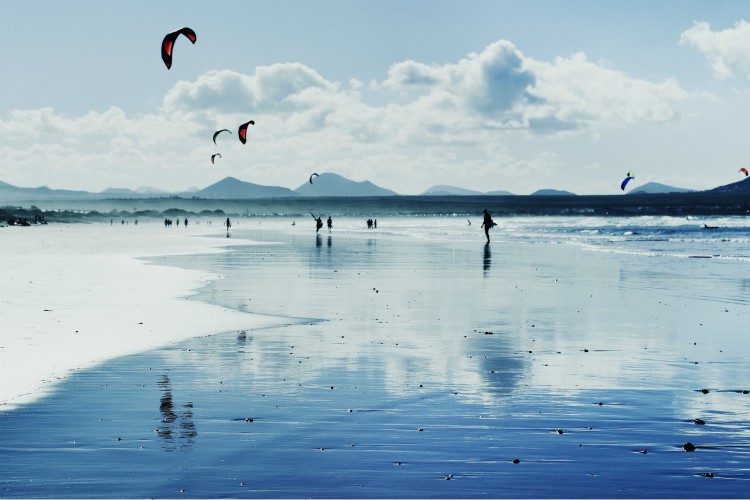
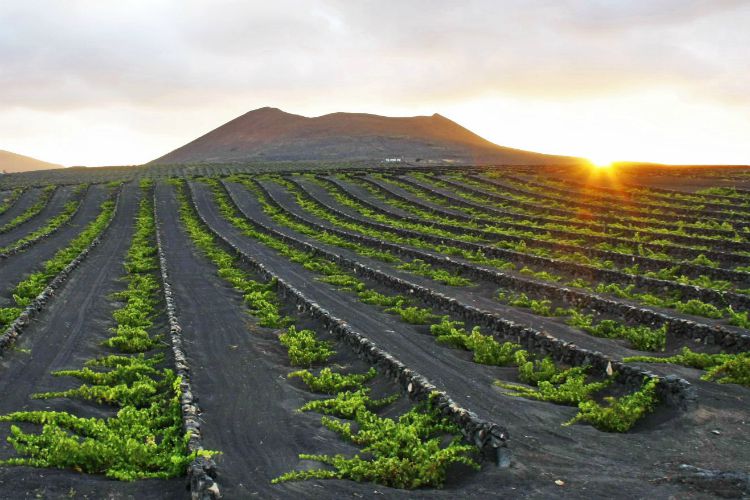
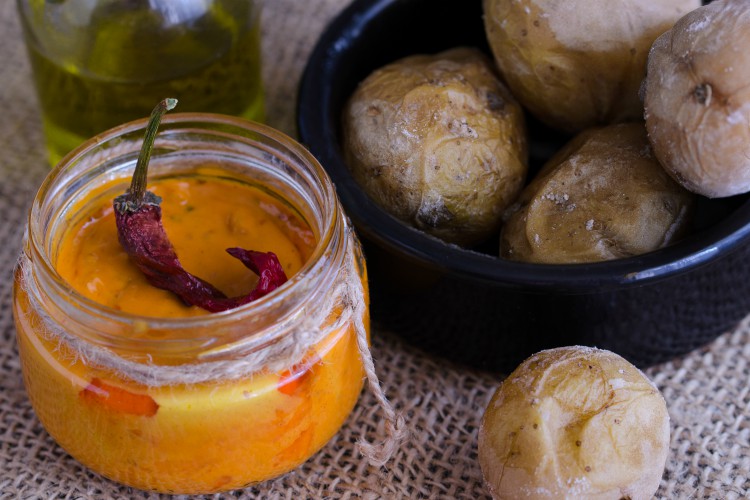
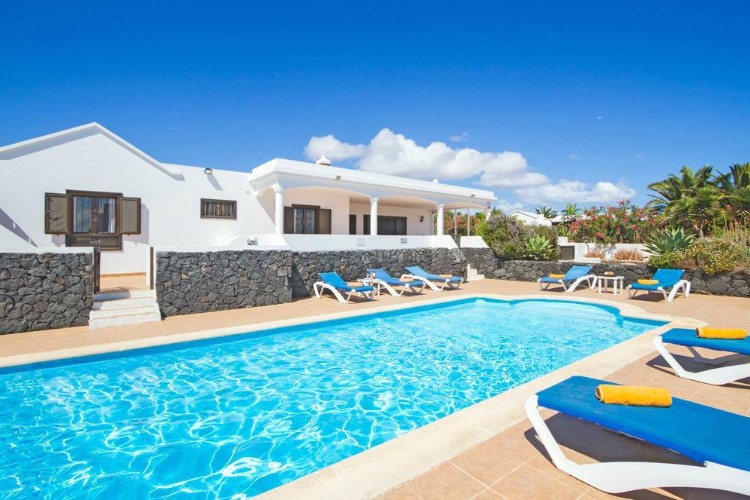
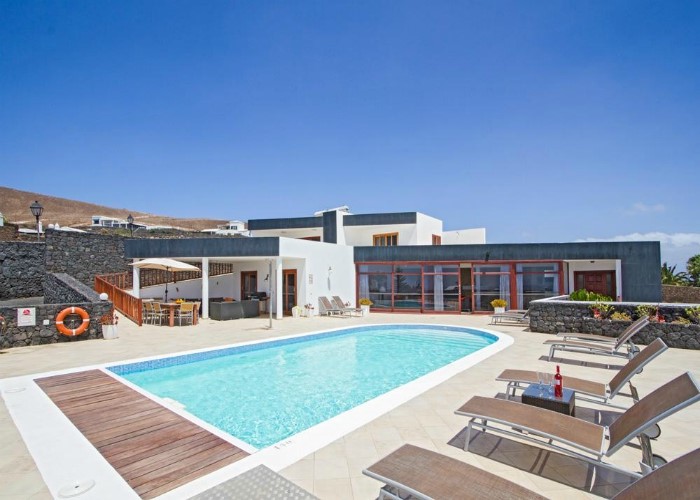
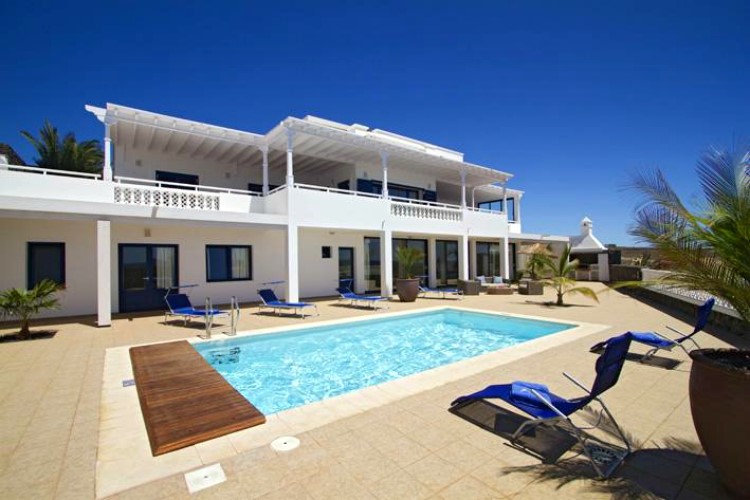
Leave a Reply